The OGLE View of Microlensing towards the Magellanic Clouds
I. A Trickle of Events in the OGLE-II LMC data.
With microlensing we had a chance to detect dark matter compact objects in the Galactic Halo (called Machos). Original proposal by Paczynski (1986) was followed by several observing groups, including OGLE. However, as the results of MACHO and EROS group are in a contradiction, OGLE provides independent study on the subject.
In the first part of the series, we present the results of the OGLE-II survey (1996-2000) towards the Large Magellanic Cloud (LMC).
We detected two candidates for microlensing events in the All Stars Sample, which translates into an optical depth of 0.43±0.33×10e-7. If both events were due to Macho the fraction of mass of compact dark matter objects in the Galactic halo would be 8±6%. This optical depth, however, along with the characteristics of the events, seems to be consistent with the self-lensing scenario, i.e., self-lensing alone is sufficient to explain the observed microlensing signal. Our results indicate a non-detection of Machos lensing towards the LMC with an upper limit on their abundance in the Galactic halo of 19% for M=0.4 MSun and 10% for masses between 0.01 and 0.2 MSun.
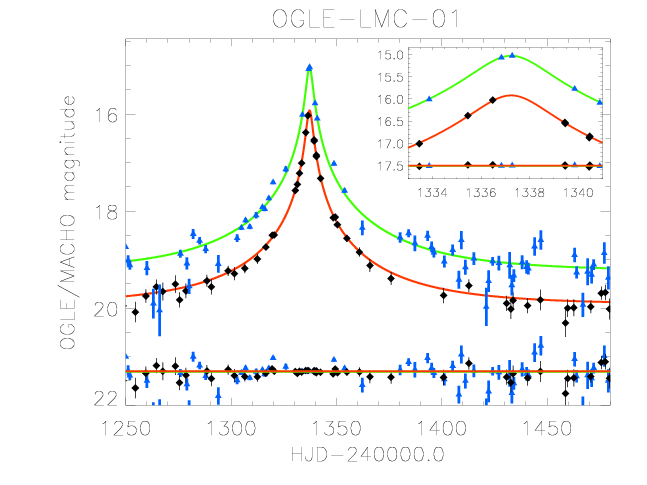
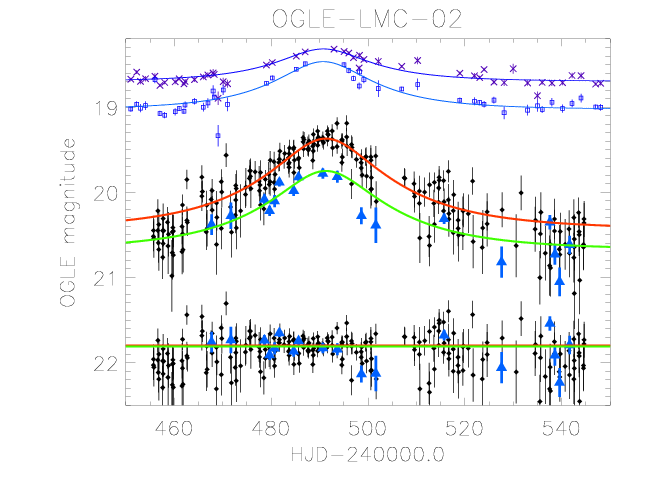
Figures show both events detected in the OGLE-II LMC data along with the best microlensing models. Black dots are for OGLE I-band, blue for MACHO B and OGLE V (for 01 and 02, respectively). Additional data shown for OGLE-LMC-02 is the MACHO's B and R datapoints.
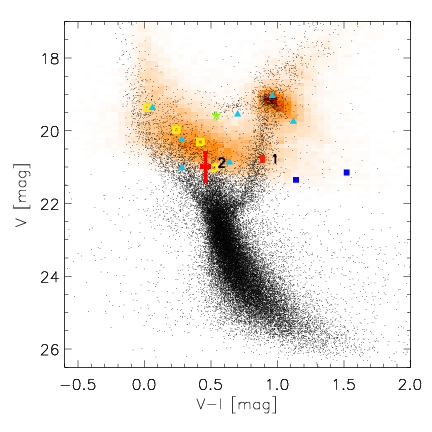
Color-magnitude diagram of the LMC_SC1 field from OGLE (red background) and HST (black dots). Source stars of the OGLE-II events are marked with the red dots and numbers. Remaining symbols denote MACHO events: dark blue are the confirmed thick disk lenses, yellow are the candidates for self-lensing (Mancini et al. 2004), green stars is for the only binary lens event and blue are the remaining events. Sources of both OGLE events seem to belong to the LMC.
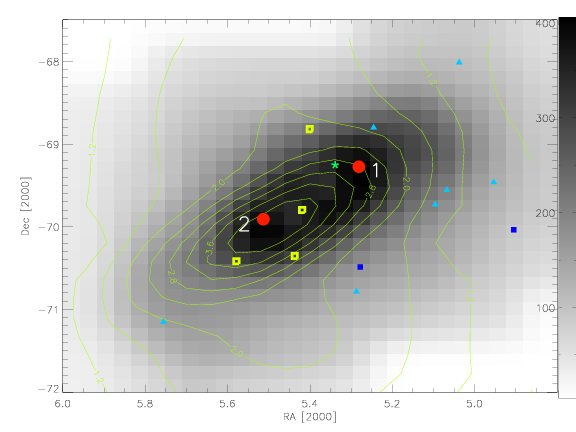
Positions of the OGLE and MACHO events on the Red Clump density map from OGLE-III. Central positions of both OGLE-II events indicate they come from very dense regions of the LMC, thus making the self-lensing explaination more plausible. Contours show Mancini's self-lensing optical depth map.
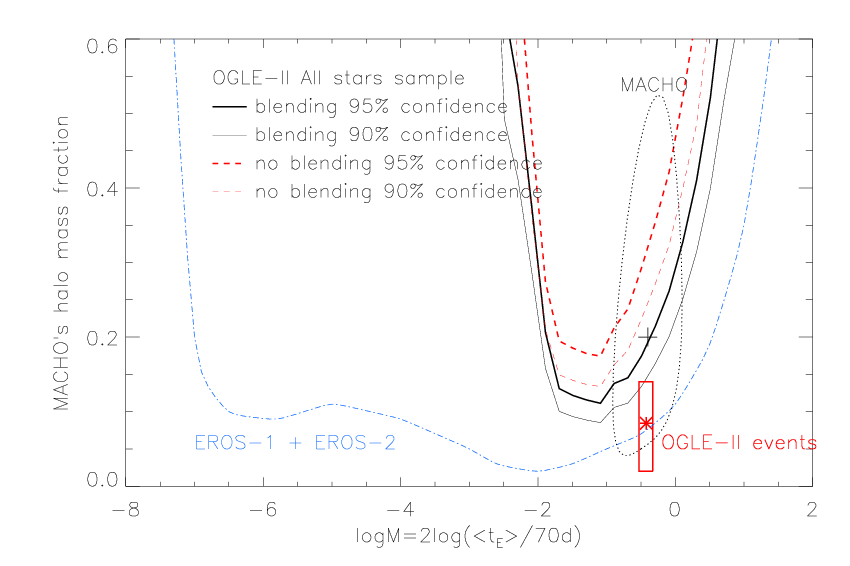
Limits on the Macho fraction in the Galactic halo were obtained assuming both events are due to self-lensing. If both events were due to Machos, then their fraction in the halo would be around 8%.
The data, including light curves of events and efficiency curves, is available in
the OGLE Internet archive or
here.
PLEASE cite the following paper when using the data or referring to
these OGLE results:
Wyrzykowski et al., 2009,
MNRAS, in press
(astro-ph/0905.2044)
Any comments about the results, the data and the form of their presentation are welcome.
Send your messages to this address.
 back
back